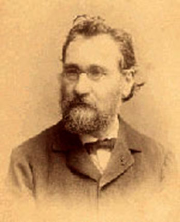Some traditions have it that sour milk products were known as far back as classical antiquity. Various sources trace the origin of yoghurt to Asia, where in the 8th century Turkish nomads made a product called "Yogurut". According to other authors yoghurt originated in the Balkans. Around 1900 sour milk products were known by various names, depending on their principal geographic distribution: MAZUN (Armenia), YOGHURT (Bulgaria), LEBEN (Egypt) and KEFIR (Caucasian countries). It was only in the 20th century that sour milk products spread further afield. A key role here was played by the Russian researcher Elie Metchnikoff (1845–1916).

The fermentation of milk using micro-organisms was the very first way of preserving milk. Even then, however, it was only possible to extend the keeping qualities of milk by a few days. Originally the milk soured spontaneously, but later on souring was carried out in a controlled manner by enriching and growing suitable lactic acid bacterial cultures and maintaining optimum growing conditions. This resulted in a reliable operating sequence in the technological process and hence to the manufacture of defined products.
The lactic acid bacteria for making sour milk products were also selected to match the climatic conditions. Thus thermophilic lactic acid bacteria were used for products originating in southern countries with warmer climates, while mesophilic lactic acid bacteria were used for products from the north. Of course climatic conditions no longer play a role in the manufacture of sour milk products in today's state of the art.
Souring, i.e. fermentation, of the milk has the following advantages:
- limited preservation of the perishable milk, pathogenic bacteria largely killed off (pH)
- increased consumer enjoyment due to the formation of lactic acid and aromatic substances
- improved digestibility due to many of the milk constituents changing during fermentation
Sour milk products are subdivided by fermentation type, as shown below:
| Fermentation type | Sour milk product |
|---|---|
| Homofermentative lactic fermentation | Yoghurt |
| Homo- and heterofementative lactic fermentation | Sour milk Sour cream "Langmilch"* Buttermilk |
| Homofermentative lactic fermentation Alcoholic fermetation |
Kumyss |
| Homo- und heterofermentative lactic fermentation Alcoholic fermentation |
Kefir |

Metchnikoff, who worked at the Pasteur Institute in Paris, was the first to investigate the effects of yoghurt on human health. He stressed the high dietary value of "Bulgarian soured milk (lit. thick milk)" and assumed that Lactobacillus bulgaricus, a micro-organism which at the time was shown to be present in this "thick milk", established itself in the human intestines during the regular consumption of yoghurt and there prevented toxin-forming processes. He used this theory to explain the known phenomenon of some people in Bulgaria living to be over 100.





